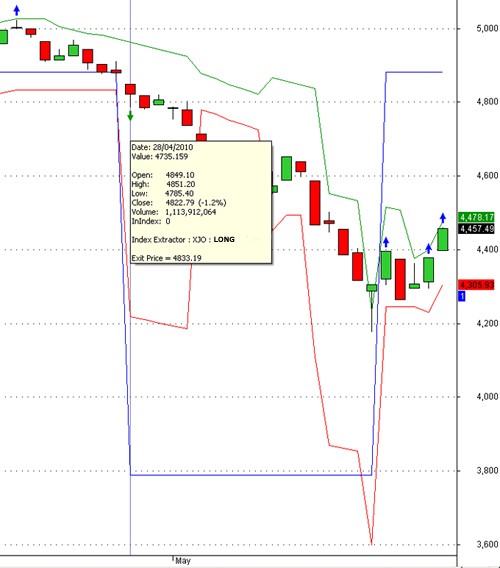How to Trade the Index
Post on: 9 Июнь, 2015 No Comment

How to Trade the U.S. Dollar Index
The U.S. Dollar fell dramatically against other global currencies in 2010 and the trend is likely to continue in 2011. Deficit spending, war and a Fed that is flooding the market with dollars to assist the banking market could cause accelerating rates of inflation and continued currency weakness. Inflation can be a very bad thing for savers and investors holding stocks or other assets denominated in dollars. However, it is easy to turn this problem into an opportunity over the next year. To understand how to take advantage of the trend in the dollar, here are a few concepts to remember:
When analysts talk about a rising or falling dollar they are usually referring to the US dollar index. This index is an important analytical tool for traders in just about any market. It is actually a futures contract which means that if you have a futures trading account you could trade this instrument like corn, oil, gold or currency futures contracts. However there are much easier ways to profit from a fluctuating dollar than creating a futures account.
The index compares the US dollar against a basket of other world currencies. This basket represents most of the largest free floating currencies in the world on a weighted average basis. Some of the currencies included are the euro, yen, British pound, Canadian dollar, Swedish krona and Swiss franc. Each of these currencies are given a weight within the index with the largest weight given to the euro.
The index was established in 1973 with a starting value of 100. That means that if the USDX is measuring less than 100 then the USD has lost relative value compared to what it was worth in 1973 and if it is above 100 then the USD is stronger than it was in 1973.
Currently the USDX is hovering around 78, which means that it is 22% weaker than its starting value. The dollar has not always been weaker than it was in 1973. As you can see in the monthly chart below, the index showed a 20% improvement in value in the dollar in 2001 and 2002.
US Dollar Weekly Chart

The index is particularly useful for traders in the bond, currency and gold markets. For example, a strong USD is usually correlated with falling gold prices, which means that gold traders are very interested in a break out on the dollar even though they may not be trading it directly.
Similarly, global crises often increase demand for the dollar as investors seek a shelter from uncertainty. This will drive the value of the USD up and often bond yields will drop. These are just two examples of how the dollar index is one more intermarket tool you can use for evaluating capital flows and finding new trading opportunties.
You can trade two ETFs that track the dollar itself. The first is UUP which will move the same direction as the dollar. If the dollar rises then UUP will also rise in value. If uncertainty were to increase or some unforeseen global crisis appears in 2010, this ETF could be a good bet.
However, if you think that the dollar is likely to decline in 2010 the second ETF is UDN which invests against the dollar. This means that UDN will rise in value when the dollar index weakens. These two ETFs trade like a stock and can be held in a traditional brokerage account. If you are bullish the dollar you could buy UUP and if you are bearish the dollar you could buy UDN.














